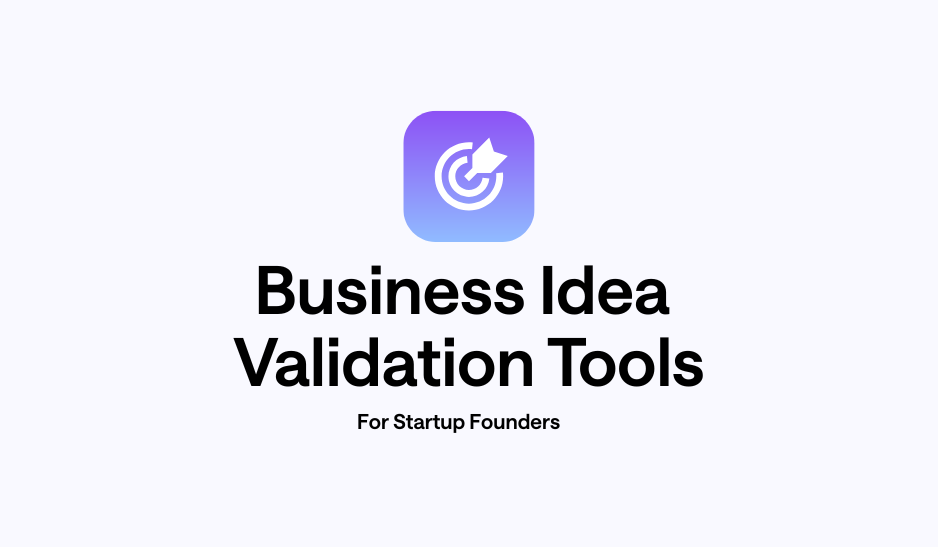Understanding Market Research: A Comprehensive Guide
Making informed decisions is fundamental for any business pursuing consistent growth and a clear understanding of its environment. In today's fast-moving commercial landscape, operating solely on assumptions carries significant risk. Market research serves as a strategic guide, providing essential direction by illuminating customer needs, competitive approaches, and overall industry conditions. It is no longer an optional activity for large corporations; it is necessary for businesses of all sizes, from new startups to established enterprises focused on innovation and expansion.
The Foundations: Why Market Research Is Necessary
Market research involves systematically collecting, analyzing, and interpreting information to reduce uncertainty and inform strategic actions. Its importance stems from several key benefits:
- Reducing Risk: Every business decision, such as launching a new product or entering a new market, involves risks. Market research helps mitigate these by providing data on market demand, potential challenges, and competitor responses. This assists businesses in avoiding costly errors and allocating resources effectively, transforming uncertain choices into informed ones.
- Identifying Growth Opportunities: Markets are dynamic. Market research is crucial for identifying new trends, uncovering customer needs that are not currently met, finding emerging customer groups, and recognizing new geographic areas ready for development. This proactive approach allows businesses to innovate, diversify, and capture new revenue streams.
- Deep Customer Understanding: Beyond basic population characteristics, effective market research delves into customer behaviors, preferences, and challenges. It helps map customer journeys and identifies factors that influence purchasing decisions. A thorough understanding of your customer base is essential for effective product development, marketing messages, and customer service.
- Competitive Landscape Analysis: Knowing your competitors is as important as knowing your customers. Market research allows businesses to examine competitor strengths, weaknesses, strategies, pricing, and market position. This information helps in distinguishing your offerings, identifying advantages, and developing strategies to gain market share.
- Informing Strategic Decisions: The information gained from market research directly influences key business strategies. This includes guiding product development to meet specific market demands, setting appropriate pricing models, selecting effective marketing channels, and optimizing distribution strategies to reach target customers efficiently.
- Adapting to Market Changes: Markets are constantly changing due to new technologies, economic shifts, and evolving consumer behaviors. Ongoing market research enables businesses to continuously monitor these changes and respond quickly. It helps ensure that strategies remain relevant and effective over time, supporting continuous adaptation.

Collecting Information: Types and Sources of Market Research
Market research uses various methods, broadly categorized into primary and secondary research.
- Primary Research involves collecting new information directly from original sources. Common methods include surveys, in-depth interviews, focus groups, and direct observation. The strength of primary research lies in providing highly specific and current answers tailored to a unique business question. However, this type of research can require significant time and financial investment, and results can sometimes be affected by how questions are asked or who participates.
- Secondary Research involves analyzing existing information that has already been collected and published by others. This approach is often more cost effective and provides a wider scope, drawing from a vast array of historical and current data. Sources include government publications, academic studies, industry reports, trade associations, and publicly available databases.
Both quantitative research (focused on numerical data and statistics) and qualitative research (focused on understanding motivations and deeper meanings) play roles within these types. For businesses seeking a comprehensive view without high costs, secondary research, particularly by leveraging public data, offers an accessible and powerful starting point.
The Core of Reliable Information: Public Data in Market Research
One of the most robust and often underutilized sources for market research is public data. This includes the large amount of information collected and shared by government agencies. These datasets are rich, providing detailed information on population characteristics (such as age, gender, background, and education), economic indicators (like income levels and employment), social trends (including household structures and language use), and housing details.
Key sources of U.S. public data include the U.S. Census and the American Community Survey (ACS). The U.S. Census, conducted every ten years, gives a complete picture of the nation’s population. The ACS is an ongoing survey that provides more current, detailed information on demographic, social, economic, and housing characteristics. These sources are considered highly reliable due to their strict collection methods and official government origin, providing a factual basis for market understanding.
Public data can answer many market research questions. Examples include: "What is the average household income in a specific neighborhood for a new business?", "Which communities have many young professionals?", or "What are the education levels in a target sales area?" Public data is also available without cost, making it a valuable asset for any business, regardless of its size or budget.
Persistent Difficulties: Why Public Data Has Been Underutilized
Despite its clear value, public data is often not fully used by many businesses due to ongoing difficulties:
- Access and Navigation: Public data is spread across many government websites, each with its own layout and organization. Finding specific information can be difficult and time consuming.
- Data Format and Consistency: Raw data is often in complex formats that are not easy to use without technical skills. Data from different agencies or times may also use different terms or structures.
- Time and Effort: The manual process of downloading, combining, cleaning, and organizing various public datasets takes a lot of time and effort. This work often delays important information or makes research too costly for smaller organizations.
- Need for Technical Skills: Using raw public data often requires knowing coding languages (like SQL or Python) or specialized software. This technical requirement prevents many professionals, including business owners, marketers, and policy analysts, from directly working with the data.
- Visualization Challenges: Even if data is successfully collected, turning numbers into clear charts, maps, or tables for presentations can be difficult, often requiring additional tools and design skills.
- Data Currency: Understanding how often public datasets are updated and ensuring you are using the most current information across multiple sources can be complex.
These difficulties mean that the full potential of public data, which is freely available, often remains unused due to complexity and technical demands.
The AI Transformation in Market Research
Artificial intelligence (AI) is fundamentally changing market research, moving beyond simple automation to create entirely new capabilities. AI is reshaping how businesses and researchers gain insights, making the process faster, more efficient, and more accessible.
One of the most significant advancements is the use of Large Language Models (LLMs) for natural language querying. Traditionally, getting specific data meant using complex database languages or specialized filters. Now, LLMs can understand questions asked in everyday language. This means a marketer can type, "Show me the demographics of households with young children in suburban areas of Texas," and the AI understands the request, removing a major technical barrier. This capability allows users to interact with data in a much more intuitive way, making complex analysis accessible to a broader audience who previously might have needed data scientists to get answers.
AI also excels at automating data discovery and synthesis. It can quickly sort through vast amounts of information, identify patterns, and combine insights from various sources. This is especially useful when dealing with disparate public datasets, where AI can identify connections and present summaries that would take human analysts weeks or months to uncover. This ability to rapidly distill information from large volumes of data dramatically increases efficiency in market research.
Furthermore, AI is enhancing data visualization and storytelling. Beyond just finding data, AI tools can automatically generate dynamic and interactive charts, maps, and other visual representations. This helps users quickly grasp complex information and communicate findings clearly to others, turning raw data into compelling narratives. The efficiency gains are substantial; what previously required manual data manipulation and graphic design can now be produced instantly, ready for reports or presentations.
AI's ability to perform predictive analysis and forecasting is also transforming market research. By analyzing historical data and current trends, AI models can forecast future market shifts, consumer behaviors, and demand patterns. This provides businesses with forward-looking insights, helping them anticipate changes and plan proactively, rather than reacting to events. This capability is becoming increasingly critical for competitive advantage in rapidly changing markets.

This transformation has practical benefits for the market research industry. It leads to significant efficiency gains, allowing for faster research cycles and reduced operational costs. It also promotes the democratization of insights, as powerful analytical capabilities become available to more people within an organization, not just a specialized data team. This shift allows businesses to make data-driven decisions more frequently and effectively.
While AI offers immense benefits, it's also important to consider challenges like ensuring data quality, preventing bias in analysis, and managing large volumes of information. However, the advancements in AI are making market research more powerful and accessible than ever before.
Cambium AI: Your Partner in Modern Market Research
Cambium AI is a prime example of this AI-driven transformation. Our core purpose is to make complex public data simple, clear, and useful for every professional engaged in market research. We have built a platform that directly addresses the challenges associated with using public information.
.png?width=3200&height=2400&name=In%20Post%20Blog%20Images%20(6).png)
Here’s how Cambium AI supports businesses and researchers:
- Instant Insights: We deliver information quickly. By using advanced AI, Cambium AI processes queries and provides insights rapidly. Research that once took weeks can now be completed in moments.
- No Coding Required: Our platform is designed for ease of use. Users ask questions in plain English, removing the need for coding skills or extensive data science training. This makes powerful market information accessible to business owners, marketers, and researchers who can now conduct their own data analysis.
- Automatic Visualizations: Raw numbers are often hard to understand. Cambium AI automatically creates clear charts, maps, and tables based on your questions. These visuals make complex data easy to see, which is useful for reports or fast decisions.
- Reliable Data Foundation: Our insights are based on trustworthy public data sources, including the U.S. Census and the American Community Survey. This commitment to reliable information ensures your market research is accurate.
- Actionable Intelligence: Cambium AI does more than just provide data; it provides useful information. It helps businesses quickly check new product ideas by looking at market demand, understand customer groups for targeted campaigns, and find growth areas.
For example, a small business owner planning a new service can quickly ask, "What are the average household incomes in different parts of this city, and how many young families live there?" Or a marketer can ask, "Show me the top 5 states with the most growth in individuals under 35 who are likely to adopt new technology." Cambium AI quickly gives these answers with visuals, enabling confident, data-backed decisions.
Embrace Smarter Market Research with AI
Market research is central to effective business strategy. While public data offers significant potential, its complexity has long limited its widespread use. Cambium AI is changing this. We provide a powerful, easy-to-use platform that makes reliable public data insights accessible. By making it easier to access foundational data, we help you conduct smarter, faster market research, leading to growth and more confident decisions.
Ready to conduct smarter, faster market research?
Discover how Cambium AI can simplify your access to reliable public data and turn complex information into clear, useful insights for your business strategy.
.png)

